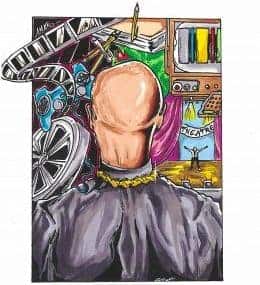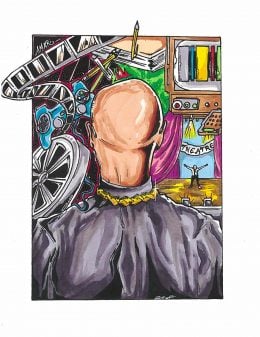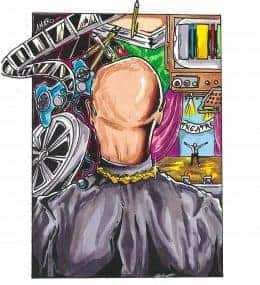Mary Queen of Scots – Review (with Spoilers)
Mary Queen of Scots reminds you of how different the world would be if men knew how to stay in their lane.

Spoiler Alert: This summary and review contains spoilers.
Additionally, some images and text may include affiliate links, meaning we may earn a commission or receive products if you make a purchase.
Mary Queen of Scots reminds you of how different the world would be if men knew how to stay in their lane.
[adinserter name=”General Ads”]
| Director(s) | Josie Rourke | |
| Written By | Beau Willimon | |
| Date Released | 12/21/2018 | |
| Genre(s) | Drama | |
| Good If You Like | Period Dramas
Women Fighting The Patriarchy |
|
| Noted Cast | ||
| Mary | Saoirse Ronan | |
| Elizabeth | Margot Robbie | |
Images and text in this post may contain affiliate links which, if a purchase is made from those sites, I may earn money or products from the company. Most affiliate links contain an upward facing, superscript, arrow.
[adinserter name=”In Article”]
Mary Queen of Scots‘ Summary (Ending on 2nd Page)
It’s 1561 and the recently widowed Mary has return home to Scotland as queen and her southern cousin, Elizabeth, is already being warned about her presence. However, while the men worry and threat over their loss of power, Mary is trying to find love and Elizabeth? Well, she simply wants peace. Especially since the crown weighs heavy and she finds herself losing her own being to it. So to be dragged into a war between the only queen similar to herself, in close proximity at that, is not something she desires.
However, being that Mary sees herself as the true heir to the throne, both she and her envoys say and do things which push Elizabeth’s buttons. Some things are forgiven, for the sake of peace. But forgiveness is finite and there comes a point where Elizabeth must decide what does she care about more? Her title, her legacy, her kingdom, or a connection which could be more a liability than an asset.
Highlights
It Brings Interest To the Real Queen Mary

When it comes to royalty in the UK, arguably Queen Elizabeth, either the I or II, is what predominately gets featured, alongside Queen Victoria. However, as for those who didn’t sit on the English throne, we don’t hear much about. Queen Mary, for an example, is often just presented as an adversary in popular media and not much else. But in a film which keeps Elizabeth as a strong role but uses her name to help introduce Mary, it is hard to not wonder more about her life.
[adinserter name=”Box Ads”]
For example, as the film does, it pushes you to compare and contrast her attempts to be a female head of state vs. Elizabeth. Also, considering the civil wars and betrayals of her life, in the film at least, it leads you to wonder what is the truth and what is just dramatics? Particularly since there are times in her life that seem to beg for multiple movies and shows for the amount of backstabbing is ridiculous.
The Buildup To Mary & Elizabeth Meeting
It isn’t until, maybe, the last 20 or so minutes Mary and Elizabeth aren’t using envoys to speak to one another but instead are face to face. The build to this is both beautiful to watch and a tad bit devastating. It’s beautiful in the sense of seeing two women control kingdoms, be political, and do so with their heads held high. Yet, it is devastating for Mary brings the idea that a woman couldn’t have it all.
In fact, Elizabeth says multiple times how she had to become a man, lose her femininity, to rule proper. Which, as you see Mary try to rule from a place of love compared to Elizabeth who rules by logic when possible, also with listening to her counsel, you see a stark difference. Also, it pushes you to remember, as much as men can weather scandals and be fools, absolutely terrible kings, women aren’t given the same length of rope to hang themselves. As seen with Mary, there is no rope but swords and knives poking at your dress. Each one waiting for you to make the wrong move so that your own spilled blood could be seen as your fault.
[adinserter name=”Larger Box”]
On The Fence
It Pushes You To Wish Only One Woman Was The Focus vs. Going Back And Forth
I’d argue we don’t have to complimentary performances in Mary Queen of Scots. Instead, Ronan and Robbie are competing with one another. Almost as if this is the role which could lead to more period dramas which would allow them to stretch their muscles. So, even though they only share one scene, it is like they are in two separate movies competing in the specialty box office.
In doing so, they almost cancel out one another. You get two tales, connected by ones fear of the other, that are like two raging hurricanes dancing around one another. There is Ronan’s Mary who, because her story isn’t oversaturated, you’re invested in for it feels like new information about a historical figure. One who is but a footnote in Queen Elizabeth I’s history. Yet, there is also Robbie who may spend the entire movie worrying about what Mary is doing in Scotland but Robbie is pushing herself in ways we haven’t seen.
Thus making what arguably, on paper, could be seen as a supporting role into one which feels like it is a leading one. Making it where, these two don’t seem to be part of the same movie, working together towards the same end. There is a cold war in which Robbie wins strictly due to the film following history.
[adinserter name=”In Article”]
Overall: Positive (Worth Seeing) | Purchase, Rent, Get Tickets, or Merchandise On (Fandango/ Amazon )
)

While the competing performances push you to wish there was but one queen truly focused on, it is those competing performances which drive the film. As noted in The Favourite, period dramas often are polarizing as they push the constraint which was acceptable in years of yore with how modern storytelling calls for dramatics. But, unlike The Favourite, Mary Queen of Scots has a more mainstream appeal. Not because it is more comical, but the way the drama is crafted has a certain beat, or rhythm, which keeps you engaged throughout. Even though it may push the boundaries of historical accuracy.
[adinserter name=”Amazon – Native Shopping Ads”]
Follow Wherever I Look on Twitter, Like us on Facebook and Subscribe to the YouTube Channel.
[ninja_tables id=”24271″]

